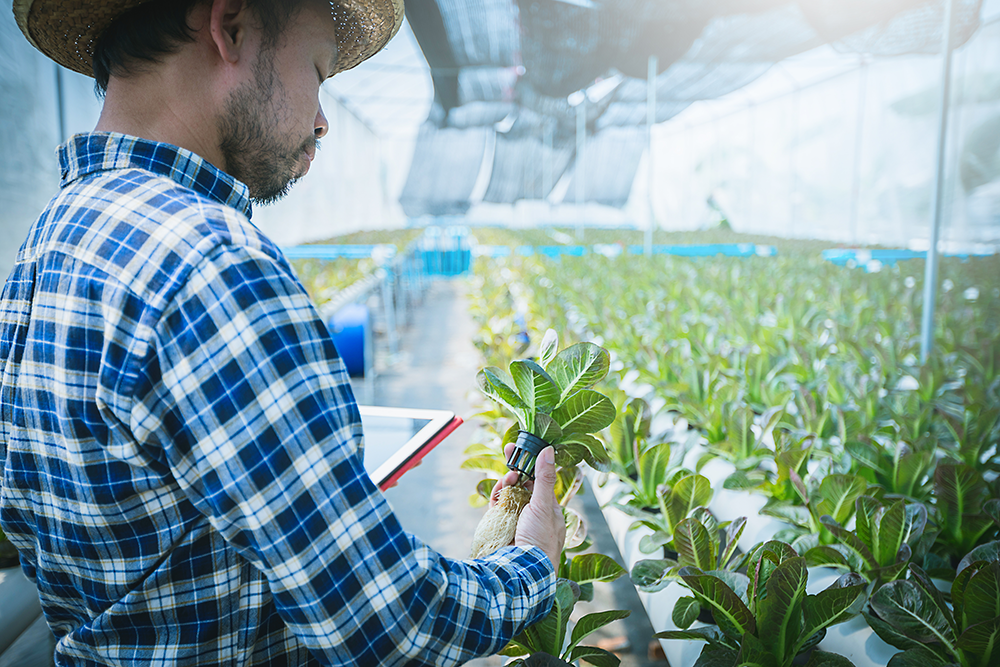Select Your Country/Region
Current Region:
 USA (EN)
USA (EN)
Choose a different country or region to see the content specific to your location
Crop steering is a powerful technique that gives growers control over how plants develop by managing their environmental conditions.
Use in hydroponic systems, greenhouses, and cannabis cultivation, where precise control of light, irrigation strategy, and nutrients makes a big difference. This method helps growers decide whether to focus on vegetative growth (leaves, stems, and roots) or generative growth (flowers and fruits) to achieve high-quality yields.
By adjusting light intensity, irrigation events, and nutrient delivery, growers can use crop steering to push plants toward their desired growth phase. In this guide, we’ll explain how to implement crop steering, the benefits it offers, and how Dosatron systems make the process easy with real-time automation.
Crop steering allows growers to manage how plants develop by providing specific vegetative cues or environmental signals.
The key to crop steering lies in adjusting the plant’s root zone grow environment, light climate, and irrigation strategy.
For example, increasing substrate water content encourages vegetative growth, while reducing water triggers generative growth. These subtle shifts help growers achieve more consistent, high-quality crops.
Crop steering involves balancing light climate and irrigation to send the right signals to plants. Here are some essential elements of the process:
Plants react to changes in light intensity and exposure. Growers can manipulate light to steer growth in specific directions:
This technique is crucial in cannabis crop, where carefully timed light changes encourage flowering.
The vapor pressure deficit (VPD) measures the difference between air moisture and the plant's internal moisture levels. Managing VPD ensures plants stay healthy and grow properly.
Maintaining the right environmental conditions through climate control ensures smooth transitions between growth phases.
The frequency and amount of water—referred to as shot size—influence how plants grow.
This irrigation strategy ensures plants receive the right balance of hydration and stress at every stage.
Using tools to monitor EC helps ensure the right nutrients balanced throughout each phase. Tracking these metrics in real time allows growers to make quick adjustments.

Crop steering offers several key benefits:
Here’s how to apply crop steering techniques in your hydroponic system:
1. Adjust Irrigation Strategy Based on Plant Phase
During vegetative growth, increase irrigation events to maintain high substrate water content and support healthy root development.
In the generative phase, reduce shot size and frequency to trigger flowering and fruiting.
2. Provide Vegetative Cues Using Light Climate and Temperature
Use high light intensity and longer exposure times to encourage vegetative growth.
Reduce light exposure and lower temperatures to shift plants into generative growth.
3. Monitor electrical conductivity EC and Nutrients Regularly
During vegetative phases, keep EC slightly lower to avoid overfeeding.
Raise EC levels in the generative phase to promote stronger flowering.
4. Use Real-Time Monitoring and Climate Control
Track conditions like VPD and nutrient delivery in real time. Adjust humidity, temperature, and light climate using climate control tools to maintain ideal conditions.
Managing all aspects of crop steering manually can be time-consuming, but Dosatron fertigation systems automate the process, saving time and reducing errors.
Using Dosatron fertigation systems gives you complete control over your crop steering strategy. Automating irrigation and nutrient delivery allows you to focus on growing healthier plants with higher VPD control and optimized resource use.
Crop steering gives growers the ability to guide plants through vegetative and generative phases by adjusting light climate, irrigation strategy, and environmental conditions. This process helps produce high-quality crops while improving efficiency. Whether you’re growing leafy greens, fruiting crops, or managing cannabis cultivation, crop steering ensures your plants develop exactly as needed.
With Dosatron fertigation systems and a controller, you can automate irrigation, track conditions in real time, and make precise adjustments based on plant needs. Take control of your crop steering strategy and grow smarter with Dosatron’s solutions.
Explore our products today and unlock the full potential of your growing operation.